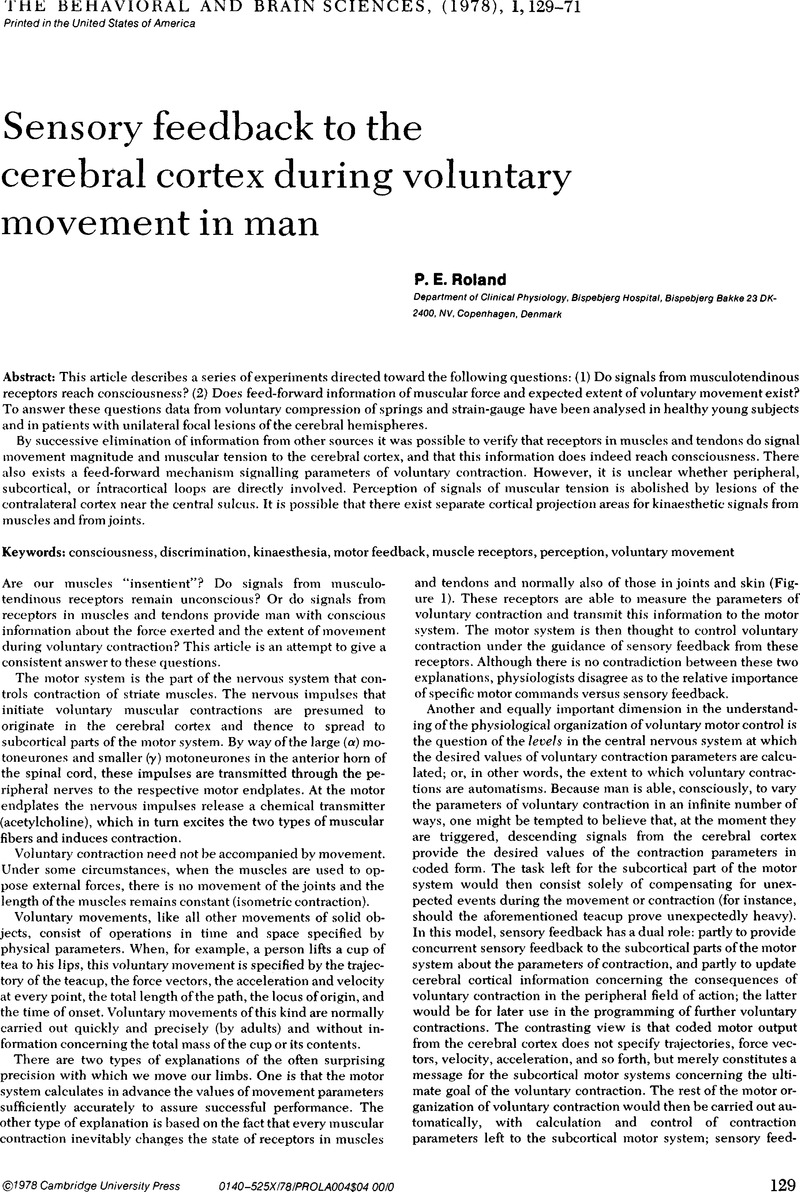Crossref Citations
This article has been cited by the following publications. This list is generated based on data provided by Crossref.
McCloskey, D. I.
1981.
Comprehensive Physiology.
p.
1415.
Matin, Leonard
1982.
Tutorials on Motion Perception.
p.
101.
Scott Kelso, J. A.
Tuller, Betty
and
Harris, Katherine S.
1983.
The Production of Speech.
p.
137.
Pylyshyn, Zenon
1989.
The role of location indexes in spatial perception: A sketch of the FINST spatial-index model.
Cognition,
Vol. 32,
Issue. 1,
p.
65.
Cochran, Joyce C.
Thorne, David R.
Penetar, David M.
and
Newhouse, Paul A.
1994.
Decoupling Motor Memory Strategies: Effects of Sleep Deprivation and Amphetamine.
International Journal of Neuroscience,
Vol. 74,
Issue. 1-4,
p.
45.
Walsh, L. D.
Hesse, C. W.
Morgan, D. L.
and
Proske, U.
2004.
Human forearm position sense after fatigue of elbow flexor muscles.
The Journal of Physiology,
Vol. 558,
Issue. 2,
p.
705.
Walsh, Lee D.
Gandevia, Simon C.
and
Taylor, Janet L.
2010.
Illusory movements of a phantom hand grade with the duration and magnitude of motor commands.
The Journal of Physiology,
Vol. 588,
Issue. 8,
p.
1269.
Capaday, Charles
Darling, Warren G.
Stanek, Konrad
and
Van Vreeswijk, Carl
2013.
Pointing to oneself: active versus passive proprioception revisited and implications for internal models of motor system function.
Experimental Brain Research,
Vol. 229,
Issue. 2,
p.
171.



